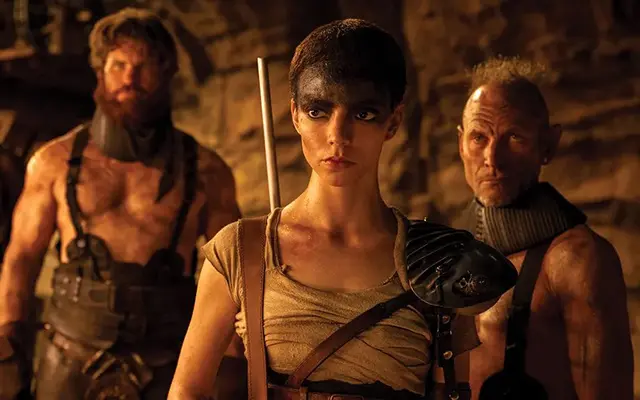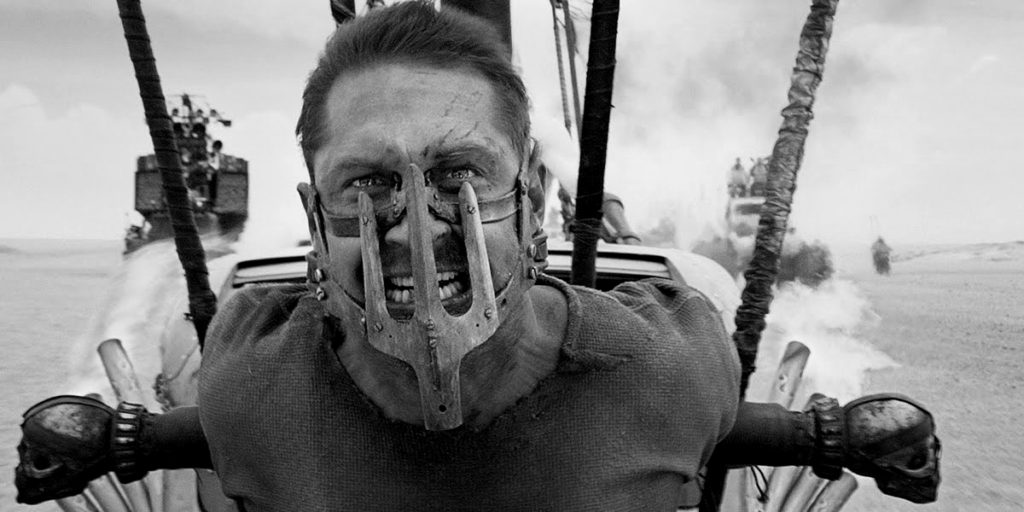Furiosa is an entertaining, underwhelming addition to the Mad Max Saga
Written by Ian Thomas Malone, Posted in Blog, Movie Reviews, Pop Culture
The entertainment industry’s fascination with prequels forces its risk-aversion tendencies into an inherent state of contradiction. The types of successful films that produce prequels are generally the same that don’t actually need sizable holes in their narratives filled with the equivalent of feature-length exposition. Prequels also save studios money on not needing much of the cast back, unlike sequels that often run the additional risk of undoing the hero’s journey of the original work.
Mad Max: Fury Road is not the kind of film that needed a prequel. The entire series is built on minimalistic storytelling, each film essentially operating as a standalone. Nobody needed to see a single installment in George Miller’s original trilogy to enjoy the franchise’s first release in thirty years. Furiosa: A Mad Max Saga diverges from this pattern by directly linking itself to Fury Road, following the origin of its title character (played as a child by Alyla Brown, and Anya Taylor-Joy as an adult, taking over from Charlize Theron).
While Fury Road left most of its world-building details to its audience’s imagination, Furiosa as a film spends most of its narrative building out the entire backstory of its leading woman, as well as the Wasteland itself. Taken from The Green Place of Many Mothers at an early age, Furiosa survives the harsh conditions of the Wasteland, first as a captive of Dementus (Chris Hemsworth) and Immortan Joe (Lachy Hulme, taking over from Hugh Keays-Byrne), before finding a mentor in Praetorian Jack (Tom Burke). The narrative is divided into five chapters, covering a wide spread of Furiosa’s life.
The politics of the Wasteland are thoroughly explored, particularly the supply chain that runs from Bullet Farm, Gastown, and The Citadel. The people who lamented Fury Road’s status as a feature-length chase stunt will find much to enjoy in the way Miller built things out this time around. Furiosa’s finest achievement is the way that the film enhances Fury Road without taking away from it or trying too hard to retrace its footsteps.
There is so much to enjoy in Miller’s approach to filmmaking, thoroughly marching to the beat of his own drum in a production that feels intimate in the way it centers Australia. Few movies with a budget of 168 million can make such a claim to exist in the same space as arthouse. So many blockbusters are overstuffed with obligations their greater franchise lore that they never stop to catch a breath. Furiosa is a lot more introspective than Fury Road, occasionally to its detriment.
Furiosa proves that the franchise can do just fine without Mad Max, but the film missed a key lesson from Fury Road, which subtlety built out its ensemble amidst all the mayhem. Furiosa rarely talks, leaving Hemsworth’s Dementus to occupy a weird space as not only a villain, but the force relaying most of the information to the audience. Hemsworth gives the role his all, but there is the sense that he’s doing too much, overstaying his welcome in more than a few sequences.
The way Miller allots the bloated 148-minute runtime also boxes Taylor-Joy out of much of the movie that bears her name as its lead. So much time is spent on Furiosa as a child that Taylor-Joy isn’t given much space to make the role her own, often amidst frantic action sequences that pale in comparison to Fury Road, inevitably drawing unflattering comparisons to Theron’s superior performance. Taylor-Joy only has about 30 lines of dialogue, and absolutely no chemistry with Burke, whose Praetorian Jack occupies an awkward space in the narrative.
To some extent, one might want to give Miller credit for not buffing out Furiosa with unnecessary side characters whose absences from Fury Road would have to be explained. The trouble is, the film doesn’t really have anyone to root for. You never lose the sense that Furiosa’s bond with the audience relies too much on what Theron built in Fury Road. There’s no Nicholas Hoult-type side characters to enjoy. Hemsworth is spread too thin carrying the dialogue, occasionally producing some unexpectedly substantive moments from his cartoonish character.
Miller’s technical craft is almost always on full display, but Furiosa lacks the sheer spectacle of Fury Road. The film is nearly a half hour longer, but the action feels smaller. That shift in scope isn’t really replaced by an added sense of intimacy either. Taylor-Joy never invites us into Furiosa, lacking all the subtle nuance of Theron’s performance.
Furiosa is not a bad film. There’s a lot of entertainment value in the way Miller puts on a show. It’s just a show you’ve seen before, longer, but not better. Fury Road felt like a genre-defining masterpiece. Furiosa settles on just being a solid, unspectacular prequel.












